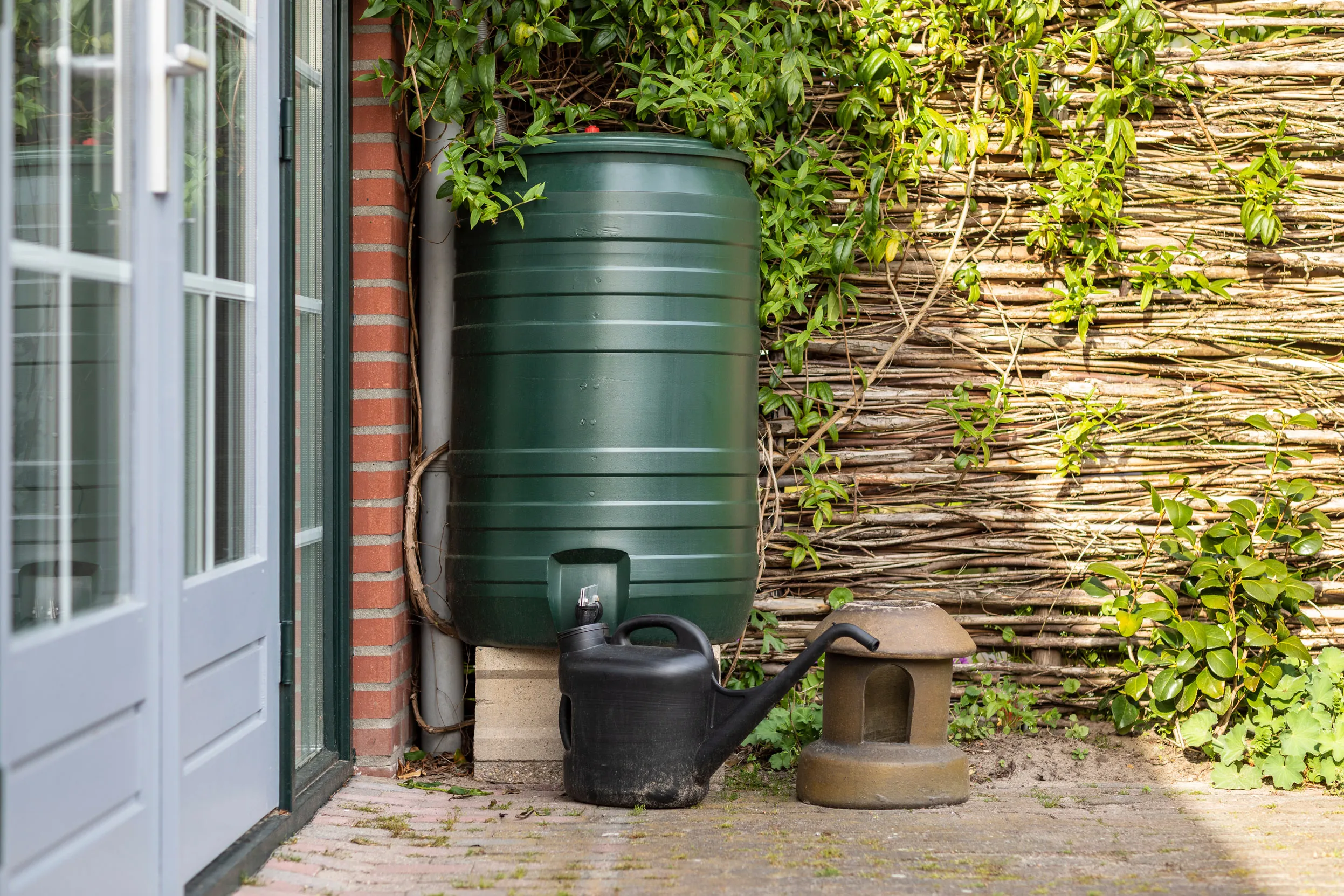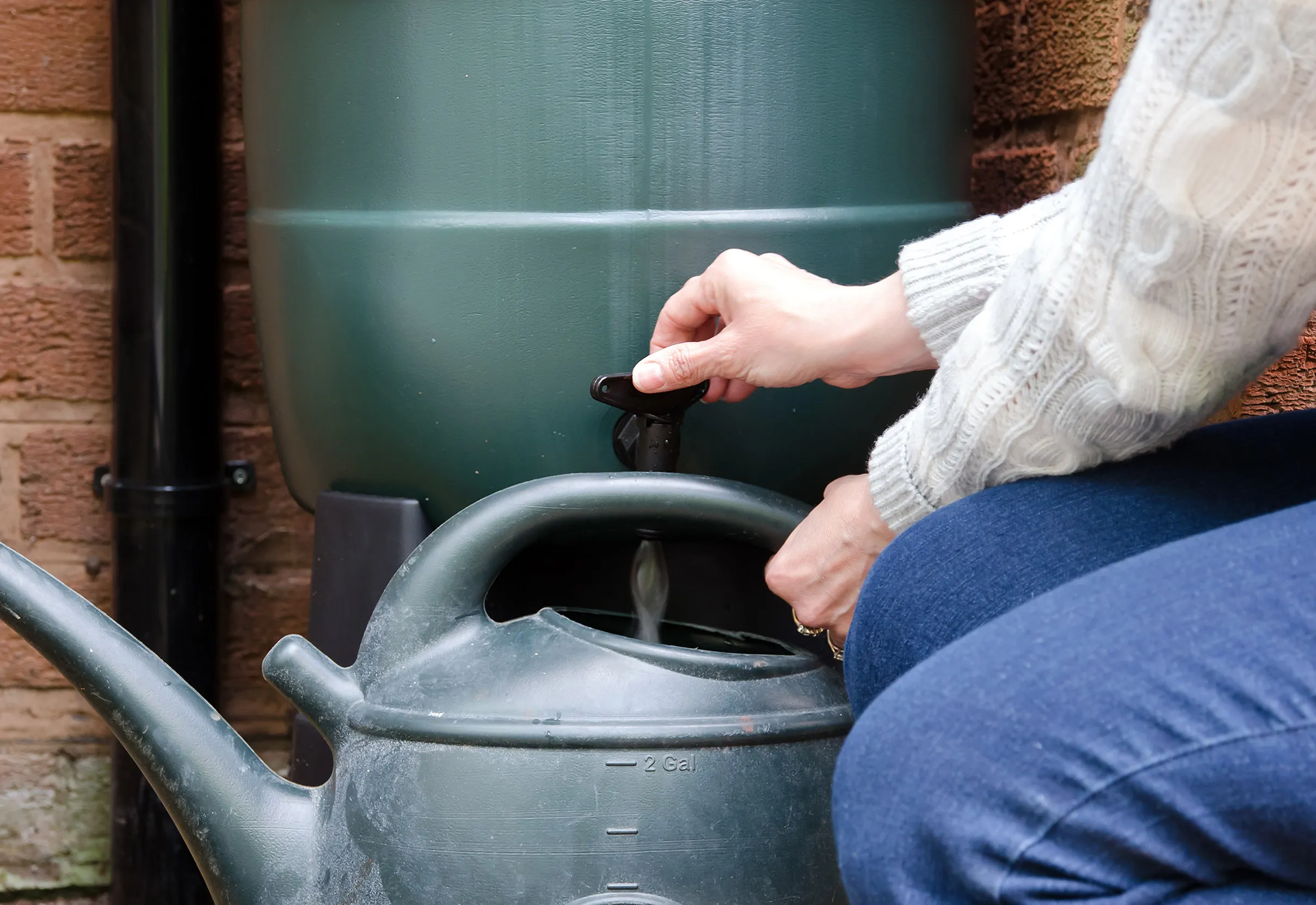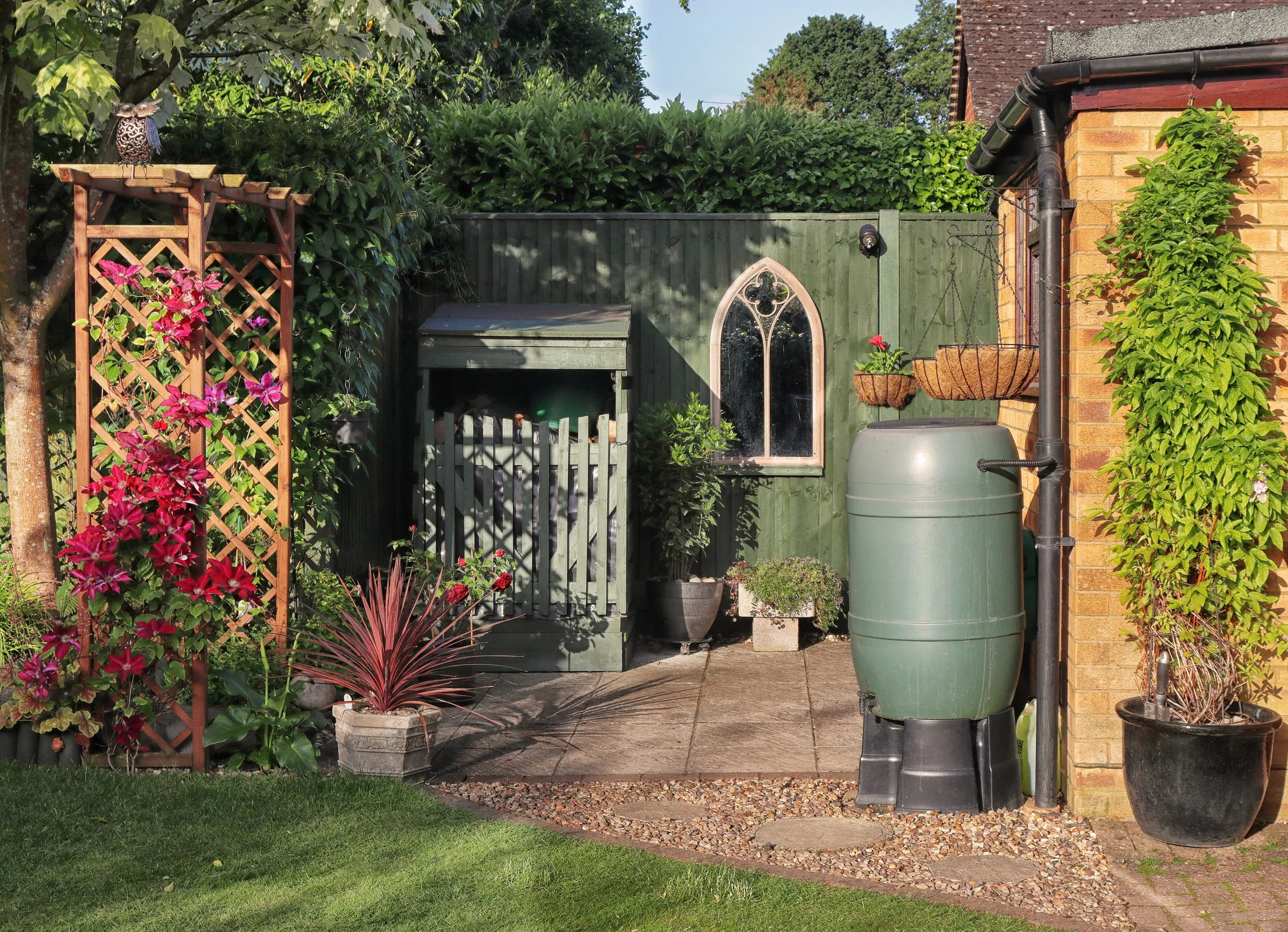How to install a water butt
Reduce your water bills with a water butt and help your local wildlife too.

Why water butts?
Gardens can guzzle water. The average hosepipe uses about 170 litres of water every 10 minutes, more than the average person uses in a day for drinking, bathing and flushing the loo.
Much of the water we use in the garden is drinking water straight from the tap. Tap water often comes from wildlife habitats, like rivers and reservoirs. Reducing your tap water use protects precious natural water resources, and reduces energy use too because your water company uses energy to clean water.
The great news is that plants and pond critters prefer rainwater. So an easy way to help the planet, wildlife, your plants and your pocket is to store and use rainwater. A standard water butt can hold over 200 litres of water, and will quickly fill up over the winter months.

Instructions
Choosing a water butt
You can often purchase water butts with a discount through your local council, and you can often find them going cheap or even free on local marketplace websites or boot fairs. You can find them in all shapes and sizes, so there's bound to be one to fit your space. You could even make your own from a large planter or barrel.
You can start with one, then add another couple, depending on how much water your garden needs. You'll also need to purchase a rain diverter kit, which allows you to link the water butt to your shed or house guttering.
Where to put a water butt
Next, find a space for your water butt. You will need a flat, firm surface next to a gutter downpipe on your house, greenhouse or shed. If your water butt is going to sit on grass or soil, it might be worth laying an old slab down as a solid surface.
